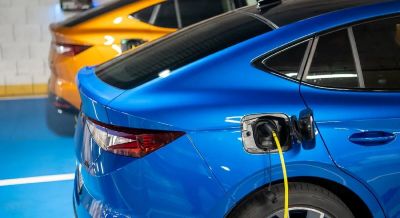


Understanding EV Charging Plugs: A Comprehensive Guide
Electric vehicles (EVs) are becoming a mainstream mode of transportation, and understanding the technology behind their charging systems is key. One of the most critical components of EV infrastructure is the charging plug. This article explores the different types of EV charging plugs, their functionalities, and their compatibility across vehicles and charging networks.As a leading EV charger manufacturer in China, Topper Company provides reliable electric vehicle charging station equipment and comprehensive solutions.
An EV charging plug connects the vehicle to a charging station, delivering electricity to recharge the vehicle’s battery. Unlike household plugs, EV charging plugs handle higher power levels and adhere to specific standards, differing based on the type of current (AC or DC), charging speed, and vehicle specifications. Understanding these differences ensures compatibility and optimal charging efficiency.
AC charging is the most common type for everyday charging and comes in two levels:
Level 1 Charging: This basic form uses a standard 120-volt household outlet. It’s slow, adding only about 3-5 miles of range per hour, making it ideal for overnight charging.
Level 2 Charging: This faster method uses a 240-volt power source and delivers up to 40 miles of range per hour. It’s commonly found in homes, workplaces, and public stations.
In North America, two main connectors are used for AC charging:
SAE J1772: The standard for most non-Tesla EVs.
NACS: Tesla’s proprietary connector, gaining wider adoption.
DC fast charging delivers power directly to the battery, bypassing the vehicle’s onboard charger. This method charges much faster, making it ideal for long-distance travel.
In North America, DC fast charging connectors include:
SAE Combo (CCS1): Combines the J1772 connector with two additional DC pins for both AC and DC charging.
CHAdeMO: A Japanese-developed connector used by some Nissan and Mitsubishi EVs.
NACS: Tesla’s connector, supporting both AC and DC fast charging.
Not all EVs are compatible with DC fast charging, and compatibility depends on the vehicle and charging network.
Tesla’s charging plug is compatible with Level 1, Level 2, and DC fast charging, simplifying the charging process for Tesla owners. However, Tesla’s plug isn’t compatible with non-Tesla EVs, though adapters are available. Recently, Tesla has opened its Supercharger network to non-Tesla EVs using adapters, part of its strategy to promote EV adoption and expand its infrastructure.
Different regions use varying standards for EV charging plugs:
North America: SAE J1772 and NACS are used for AC charging; CCS1, CHAdeMO, and NACS for DC fast charging.
Europe: Type 2 is the standard for AC charging, with CCS2 used for DC fast charging.
Asia: CHAdeMO is prevalent in Japan, while China uses its own GB/T standard for both AC and DC charging.
These regional differences emphasize the need for standardization to ensure a seamless charging experience for global drivers.
As the EV market grows, efforts are underway to standardize and improve charging infrastructure. Tesla’s decision to allow non-Tesla vehicles to use its Supercharger network is a step toward greater interoperability. Additionally, emerging technologies like wireless charging could eliminate the need for physical plugs in the future, offering a more convenient experience.
EV charging plugs are essential for the electric vehicle ecosystem, enabling efficient and convenient recharging. The variety of plugs reflects the diverse needs of EV owners, from daily charging to long-distance travel. As the industry evolves, standardization and innovation will play a key role in accelerating global EV adoption. Understanding these charging plugs and their compatibility is crucial for current and future EV owners.Know more about Google SEO Directory
